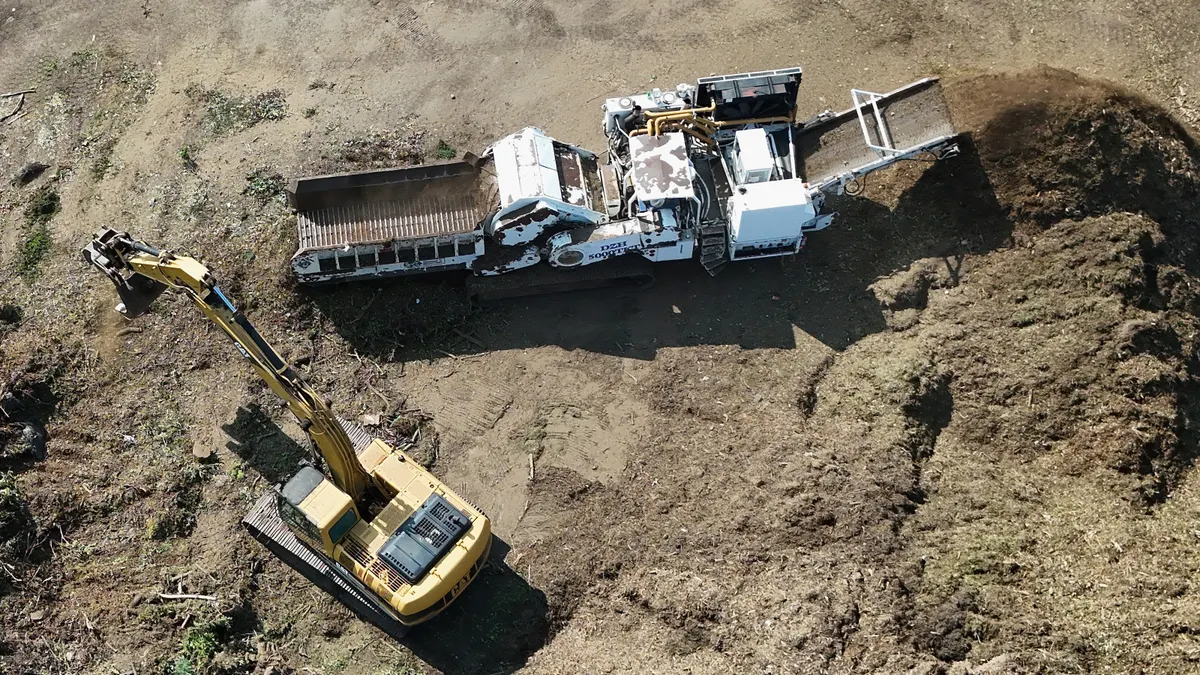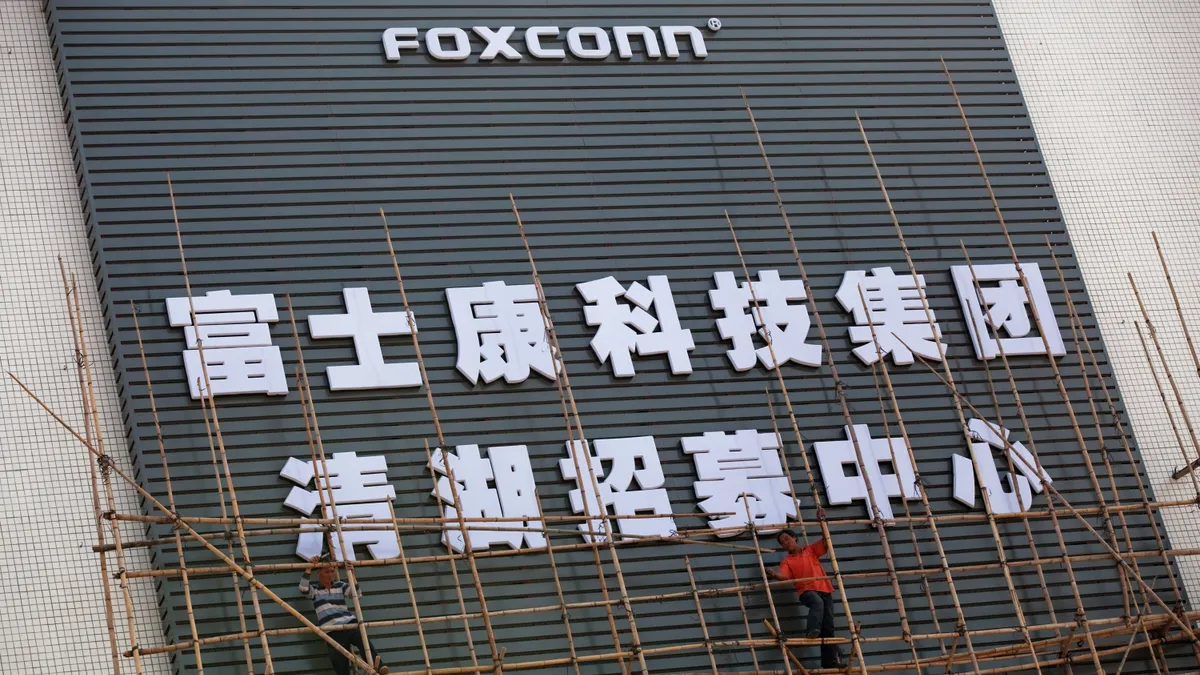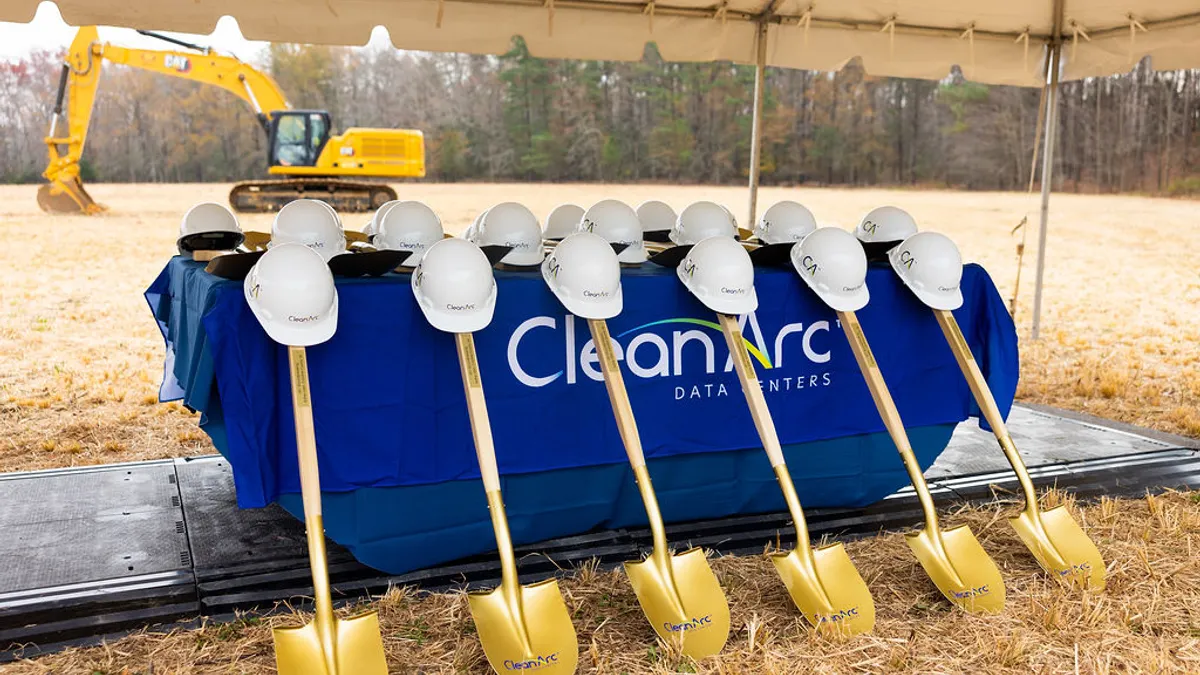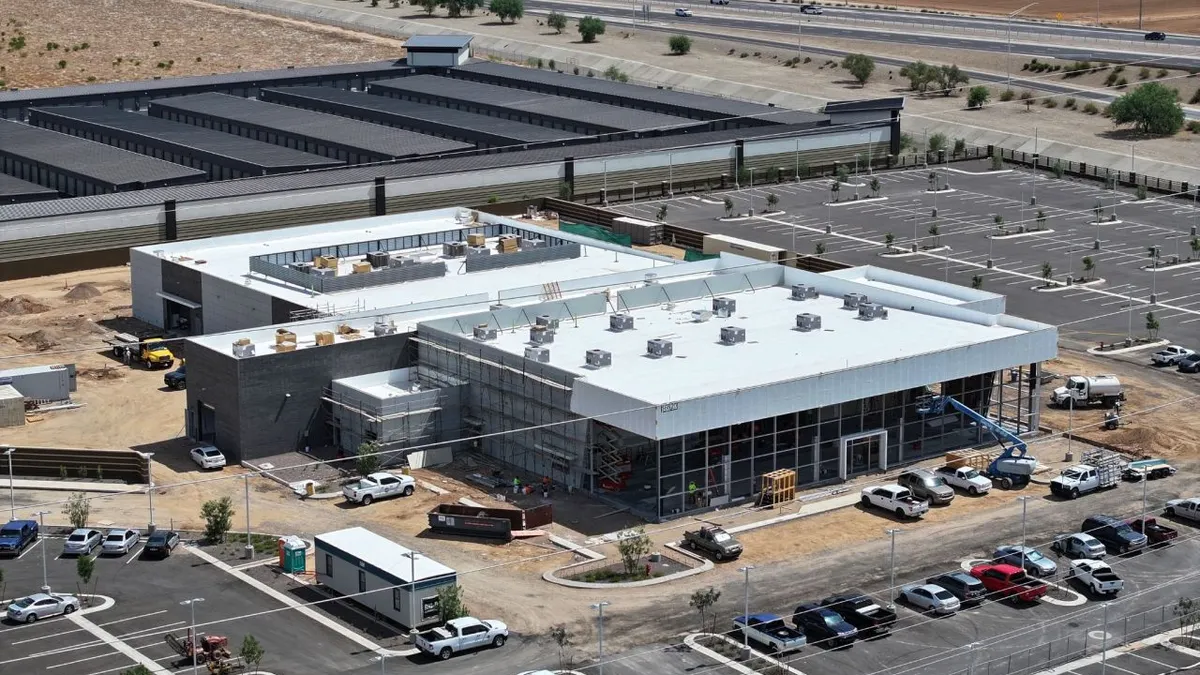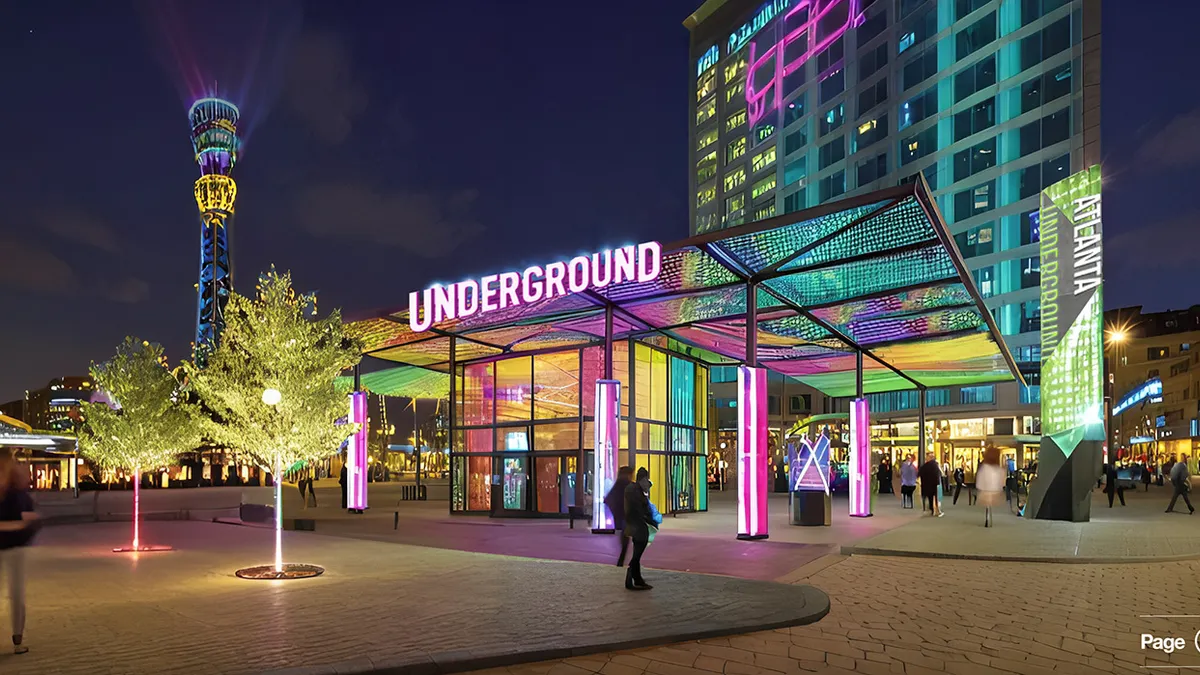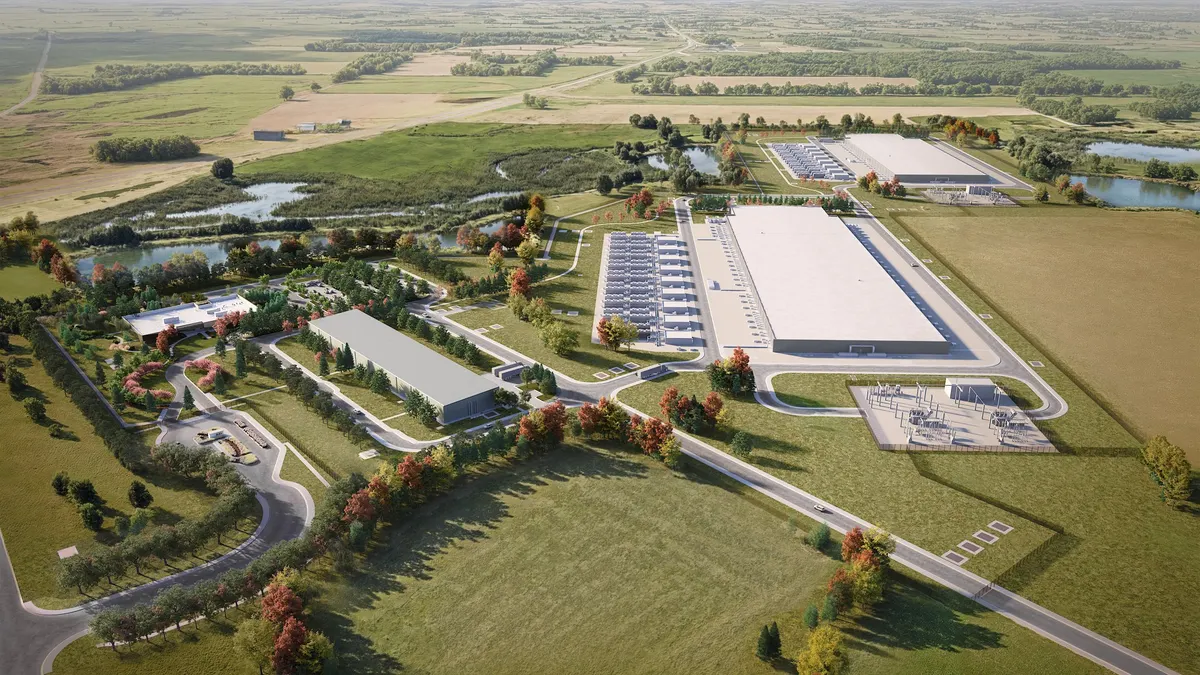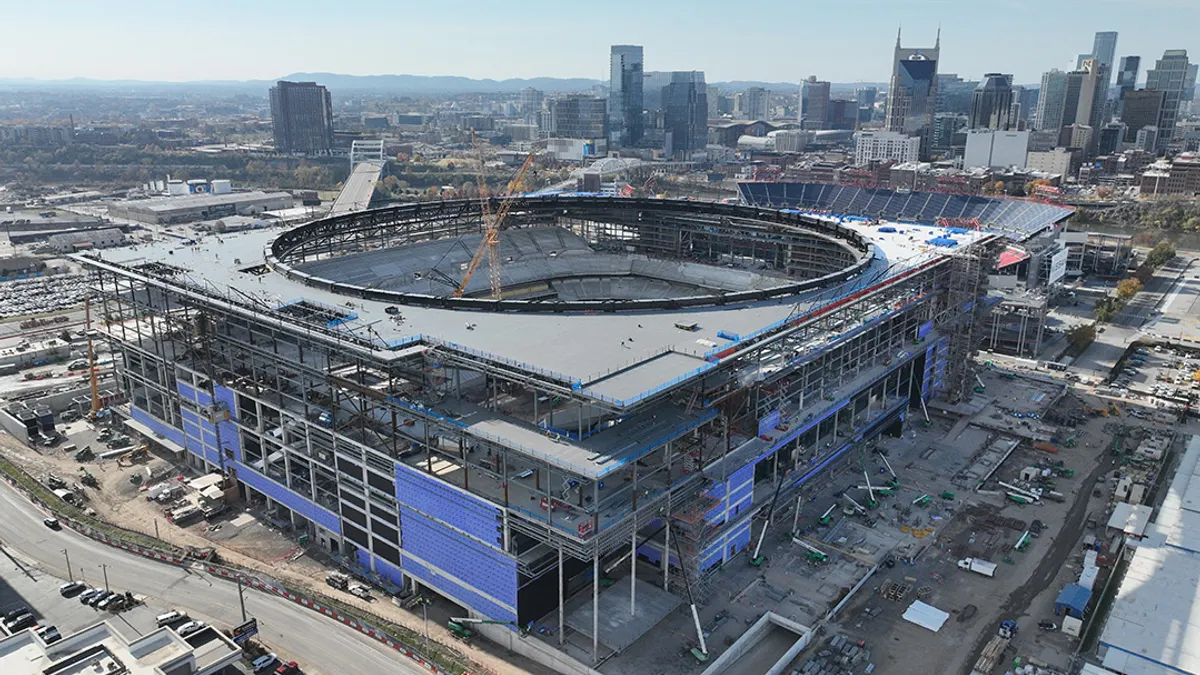Real work starts long before contractors hit shovels to the ground, especially on billion-dollar megaprojects.
Lisa Stalteri, partner at Kansas City, Missouri-based law firm Lathrop GPM, knows this firsthand. She focuses on some of the country’s largest infrastructure and private development deals, typically ranging from $300 million to $500 million or more. For example, Stalteri is currently advising on a $3 billion airport project slated to span five years.
Based in Lathrop GPM’s Redwood City, California, office, Stalteri has nearly 25 years experience in commercial real estate transactions and environmental law. She counsels clients in all areas of commercial real estate and its operation, including leasing, financing, construction and acquisitions and dispositions.
That role gives her a close view of how owners and contractors are working through today’s volatile construction environment.
Here, Stalteri talks with Construction Dive about risk allocation, cost escalation and negotiation.
This interview has been edited for brevity and clarity.
CONSTRUCTION DIVE: On large, multiyear projects, what’s the first thing you look for in a contract to manage risk?
LISA STALTERI: For any construction project, particularly large multiyear projects, effective project management is more critical in managing risk than any contract provision.

In my experience, the construction manager at risk delivery method can be very effective for large, multiyear projects, if permitted by applicable law. So, I would first check if that was the type of contract being used.
In the CMAR project delivery model, the construction manager is involved early in the design phase, collaborating closely with the project owner, architects and engineers to provide input on design, costs and constructability. That allows for better cost control and project management, as the construction manager can make more informed decisions on materials, labor and methods. During the construction phase, the construction manager acts as the general contractor, taking on the risk of completing the project within a guaranteed maximum price.
On large projects spanning multiple years, I anticipate that risks will occur, such as changes in law, material price escalation, labor shortages and delivery delays. So, the first thing I look for in a contract is whether there are provisions that reasonably allocate risks and provide a timely and meaningful dispute resolution process. That might include a material price escalation clause and a clear change order process.
The goal for all participants is a successful project. If the contract sets forth a zero-sum game, it increases the risk of an unsuccessful project due to such things as default, insolvency and eventually litigation.
How are owners handling cost escalation clauses in today’s market?
The pandemic led to widespread adoption of material price escalation clauses. The uncertainty created today by fluctuating tariffs, labor shortages and supply chain disruptions, has again brought material price escalation clauses to the forefront, particularly for large, multiyear private sector projects.
A typical material escalation clause provides a contractor with the right to a change order if a significant price change for material occurs after signing. That’s usually tied to a threshold percentage increase and often includes a cap on the amount an owner has to absorb. Sometimes there’s a commensurate savings clause if a material price decreases, too.
Parts of the contract up for negotiation are the trigger percentage change in price and whether that’s tied to an index or to cost at time of contracting. The documentation required to demonstrate the change is also laid out. In my experience, these negotiated elements are project specific, rather than set by trends in the industry.
A negotiated material price escalation clause can make agreement easier over other risk allocation provisions, such as force majeure, contingency, allowance and change orders.
If you had one piece of advice for these types of megaprojects today, what would it be?
My one piece of advice would be to reevaluate the economics to determine if it makes sense to start construction or delay it.
Abandonment of construction projects in the private sector is nearing a multiyear high, particularly in California, due to high interest rates, fluctuating tariffs, potential material price increases and construction labor shortages.
Data has indicated that construction in the public sector has shown greater stability.
How has the balance of risk between owners and contractors shifted in the past year?
The shift is mixed.
Given the decrease in private sector construction, owners who proceed with projects generally have a strong bargaining position, and some owners continue to take the zero-sum game approach to risk allocation because they can.
On the other hand, given the current economic uncertainty because of fluctuating tariffs, material price escalation, labor shortages and supply chain disruptions, some owners are realizing that the lowest bid may reflect an offer that a contractor actually cannot deliver. As a result, some owners are placing greater emphasis on a contractor's creditworthiness and track record.
In these situations, I am seeing owners take an approach to risk allocation that is focused on the delivery of a successful project, rather than a zero-sum game approach.



